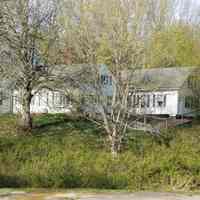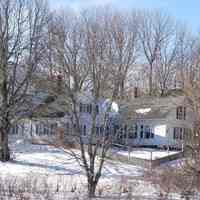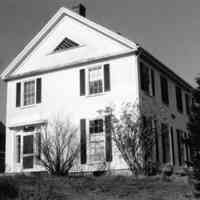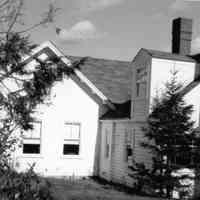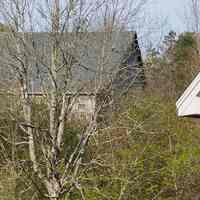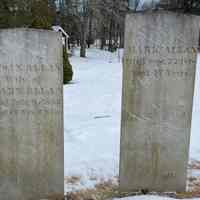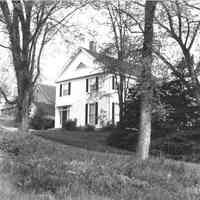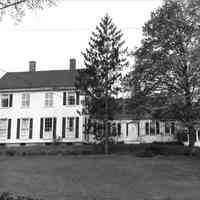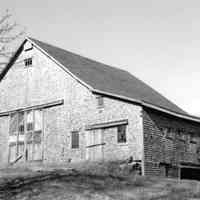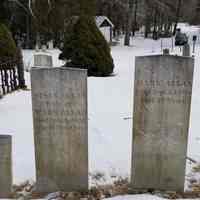T.W. Allan House Dennysville, Maine
From the earliest days, people from "away" who had occasion to visit Dennysville for business or pleasure found good public houses awaiting them. The first such "halfway house," or house for strangers, was probably the small home of Mark Allan, son of Col. John Allan, and his wife, Susan (Wilder). Their house stood on the hill close to where the residence of their son, Theophilus W. Allan would later be built. Until after 1815, the Allan's provided wholesome domestic fare and comfortable beds for weary travelers. Theophilus W. Allan, second son of Mark and Susanna, succeeded his father in ownership of the property, residing in the house near his father's earlier one. The original part of T.W. Allan's large house was a typical colonial one to which, he added, in 1839, a larger two-story section of the Federal Revival design. He married Martha Sargent and raised eight children in the family homestead. It was he who was a merchant on Store Hill, was involved in milling at the Great Works, and had a wharf and storage building on the Edmunds side of the river. The house was passed from father to sons, Nelson S. and William R. Allan, with Nelson deeding his portion of the property to William R. in 1895. Willima R. and his wife Helen, who was the daughter of Benjamin and Mary (Stoddard) Kilby, were the parents of two sons and three daughters. In 1915 the Allans sold the house and land to Harvey and Pearl (Boyden) Sprague. Harvey, a dealer in livestock, made use of the many acres of pastureland and fields, as well as the large barn at the top of the hill, while his wife often took boarders and accommodated transients in the many spare rooms of the Allan homestead. Six years after Harvey's 1958 death, his widow, Pearl Sprague, sold the property to Bradford and Miriam Marsh, who resided there through the 1980's, and eventually turned over the house and land to their daughter Susan. A commodious icehouse was built into the hillside next to the Mark Allan house during the early days of Dennysville. Slabs of ice cut in the mill pond during the winter were stored in the icehouse packed with sawdust for insulation. The draining of the pond in 1930 eliminated the source of ice supply and hastened the common use of electric refrigerators.
Dennys River Historic PhotographsPhotos for MapDennysville Historic District


